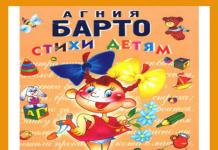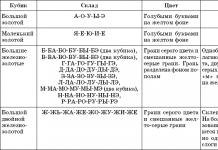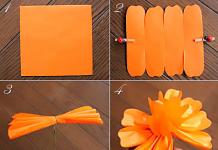Everyone knows that Hotei symbolizes wealth, happiness and abundance. The figurine depicting a deity is considered one of the most popular souvenirs in Eastern countries. It is available for purchase and, if used correctly, can attract good luck and good income to its owner.
Hotei's story
According to an ancient legend, at the end of the twentieth century, a small and obese monk lived in the Middle Kingdom, whose name was Tse-Tsy. He constantly traveled, and with him only had a wooden rosary and a cloth bag (in Japanese, Ho Tei). In the East, a person with a huge belly is especially revered. He is considered generous and soulful. Where the monk came, luck and prosperity immediately appeared. People often wondered what he was wearing in his bag. The mysterious wanderer answered mysteriously: "The whole world."
There is another belief, which says that it was Maitreya - an unusually handsome man... He captivated all women with his appearance. Tired of rejecting broken hearts, he reincarnated as a not very handsome man and began to give people all kinds of benefits.
Hotei Figurine - God of Wealth
The figurine's appearance is not the most attractive. This bald and fat character always has a sincere and kind smile. Often confused with Buddha and even called "Laughing Buddha"... You can distinguish them by the presence of a bag.

According to one of the assumptions, he hides there all the sorrows and sorrows that he finds along the way.... According to another interpretation it is from this bag that he distributes his gifts.
Important! The figurine should be made in gold or white. Material and size do not matter.
Types of Hotei: selection rules
The figurine can be in different variations, which affect the purpose of the symbol.
There are the following types of Hotei:
- On the dragon turtle. Raises money, helps to conclude lucrative contracts and establish business contacts.

- In a pyramid with coins and golden sand. Helps in professional development and teaches you not to waste your time on trifles.
- With a pearl. Attracts money, gives new knowledge and spiritual growth.
- On a three-legged toad with red eyes and a coin in his mouth... This is one of the most powerful talismans and is suitable for those who want to get rich quickly.

- With a rosary. Opens the way to wealth, knowledge and self-improvement.

- With a fan. Attracts finance and changes life for the better.

- With ginseng staff, peach or pumpkin... They not only bring financial well-being, but also prolong life.

- With kids... Helps childless families to have children, gives money for their upbringing.

- With a bowl, coins, gold bars... It will teach you not only how to receive money, but how to use it rationally.

- With a yoke on which hangs a coin of happiness or a basket of ingots... Endows the owner with happiness and material gifts.

Attention! In the classic form, Hotei is depicted with a bag on his back. Such a talisman will bring prosperity to all areas of life.
Feng Shui location
The presence of a figurine emitting positive Qi energy will be beneficial to any room. The location will depend on the purpose:
- If a person interested in honor and respect, the figurine is placed at the front door. At the same time, Hotei must look at the door.
- To gain recognition the statuette is placed in the southern part of the room.
- Optimal location for winning gambling and financial luck- southeast.
- By placing Hotei in the eastern part, you can get harmonious relationships with your soul mate and children.
- The presence of the mascot in the office will save you from gossip, intrigue and evil looks.
- A hotei with coins should be in the area responsible for abundance.

Important! It is better to place the amulet in the visible part of the space. Better to buy several pieces at once and arrange them in different corners.
How to handle a figurine to make a wish come true?
Want to require the right attitude to yourself. The talisman should be in a clean place and please others.
How to ask Hotei? They ate to stroke Hotei's pot-bellied stomach 300 times and think about their desire, the laughing man will definitely bring it to life. Move slowly and in the direction of the clock hand. You need to rub your belly before each exit from the house so that luck does not leave the whole day.

Buying a figurine also needs to be thoughtful. It is better to prepare a place for her in advance. To cajole Hotei is quite simple: a cheerful creature is fueled by benevolent energy and joy that reigns in the house... He patronizes the optimists.
Reference! When touching a divine creature, one should not think about the bad, especially one should not touch the belly and the cherished pouch.
Such figurines have long been very popular in the East. The tradition is gradually coming to Russia. For a symbol to be useful, you need to know how to choose it correctly, where to put it, and how to handle it. Then he will give the owners of the apartment all kinds of benefits.
According to feng shui, the god of luck and wealth Hotei is considered the patron saint of material wealth, joyful communication and unrestrained fun. Hotei symbolizes harmony, prosperity and success in various spheres of life, and, provided that it is correctly placed in the house, it can make the life of all its inhabitants comfortable and cloudless.
What should people expect from a god named Hotei
Hotei's traditional meaning with a sack is to attract wealth, prosperity, and success in work and business. In Japanese mythology, this god is known as Budai (literally translated - "linen bag"). The inhabitants of the Land of the Rising Sun believe that it brings good luck to the house and contributes to an increase in the level of income and material well-being of all its inhabitants.
Hotei is also called the money Buddha and the Buddha of Abundance. God generates positive Chi and destroys negative Chi. He is able to prevent the harmful effects of passing stars, which bring diseases and all kinds of misfortunes with them. Since the Hotei figurine means prosperity and joy in various forms, its color plays an important role. According to feng shui, it should be golden or white.
What does the god of prosperity and fun look like?
In feng shui, Hotei is portrayed on a toad, but more often without her with a big belly and a full sack in which he carries jewelry, money and gold. There is another version, asserting that in a dense bag of a smiling peasant with a huge belly there are not gems and coins, but human misfortunes and hardships. Among his companions are often observed: children, a dragon, a horse, an elephant, a turtle and a snake. The dragon attracts new investments in business, the turtle - wisdom in life, children are able to help spouses who want to have a child.

The Hotei figurine can be made from different materials such as plaster, amber, clay, stone, wood, metal alloy or stone chips. A popular souvenir is a pot-bellied Hotei keychain. There are both miniature figurines and huge statues depicting the god of well-being. In his hands he can have a variety of attributes, from a rocker and a peach, to a vase, a rosary or a pearl.
Note! Pearls are considered a symbol of spiritual and material wealth, peach fruits symbolize longevity, and beads symbolize the search for ways of spiritual enlightenment.
Where is the best place to place the Hotei figurine
You can put a figurine of the god of well-being in an apartment in a variety of places. Those who wish to gain respect and honor should place a figurine near the door in the hallway. At the same time, Hotei's gaze should be clearly focused on the entrance. People who dream of success and recognition are advised to place a figurine in the southern part of the house. If Khoteichik is placed in the southeastern zone of the dwelling, he will be able to attract luck to the owners in lotteries and gambling. The figurine of the god, placed in the eastern sector, attracts harmony and harmony to the apartment.

According to feng shui, the god of wealth Hotei is located in the house, depending on the intentions of its owners. The figurine of a pot-bellied man with a cane is best placed in the health sector, while it is preferable to place a pearl in the sector of knowledge and wisdom (northeastern zone). The best place for the god of well-being, surrounded by a pack of children, is the western or southwestern part of the dwelling.
Note! Since the meaning of Hotei in feng shui is very capacious and extensive, you can buy several figurines, placing them in the most prominent places in the house.
What you need to do to fulfill your cherished desires
In order to make a wish, you must activate a figurine symbolizing the god of well-being. You will need to rub his stomach in a clockwise direction at least three hundred times in a row, concentrating all your attention on your own dream. Before leaving the house, it is worth stroking Hotei's belly, for which he will definitely reward him with good luck and good mood.

Legends of Hoteya
Though it is far from a simple decoration for the home, God has an absolutely real prototype. One of the most widespread legends says that the prototype of Hotei is a monk named Tsitsy, who instead of solitude wandered through the crowded market squares and markets. He made his living by predicting the weather. Of the property, the monk had only a cane, a rosary and a bag of dense fabric, where he put alms from the hands of kind people. Despite the wandering lifestyle, a huge belly protruded from under his cassock, in which the highest concentration of Qi (vital energy) was concentrated.
It is worth looking at the photo depicting the Buddha, who had a similar belly, in order to understand that a large belly among the Chinese was considered a sign of a broad-mindedness. Where the monk Tsitsy, the prototype of the god Hotei, appeared, people improved their health and the level of material well-being. When someone asked him a question regarding the contents of the bag, he replied: "The whole world is there."
The god of wealth Hotei in ancient Chinese science is one of the central persons, therefore today you can meet his image in any corner of our vast planet.
Hotei with a gourd and a bowl of wealth
Hello everyone. Natalya Gramotkina is in touch and today I want to tell you about another fairly common Feng Shui talisman, a god who symbolizes wealth, fun, a carefree and measured life. They call him Hotei (which means "canvas bag") or Laughing Buddha.
Who is this - Hotei Feng Shui?

There is a legend that Hotei Feng Shui is not just a fictional god, but a very real person, a monk, he lived many centuries ago, and who was later elevated to the rank of a deity. According to the same principle as in Christian countries, people were canonized for their good deeds during their lifetime. For example, Ksenia Petersburgskaya, Andrew the First-Called, Matrona of Moscow and others, I will not list them all, I think you understand the meaning.
 With a pearl
With a pearl Well, and so, this monk lived, did not grieve. He was a moderately well-fed man in full dawn of strength, cheerful and carefree (just like Carlson), in China in the tenth century. His name was either Tsetsy, or Tsi-Tsi, well, not the essence. And the bottom line is that he was a pot-bellied good-natured person who loved to travel (damn it, well, definitely Carlson), and not to sit in a monastic cell. He loved to communicate with people, often visited busy bazaars and earned his bread by predicting the weather. And in whatever new places he appeared, happy days would come everywhere. Prosperity and joy filled people's homes. And all because (in any case, so the legend says) that he carried with him a large canvas bag, in which he collected all the misfortunes of people, and in return gave them joy and prosperity. Here is such a kind uncle. Where to find this now 🙂
 Hotei surrounded by children
Hotei surrounded by children And to the question: "Uncle, what's in the bag?" He was short (just like VV Putin) and answered: "The whole world." What he meant by this is still not known. This question is still the subject of controversy among the Eastern sages (asked a riddle, damn it). Some believe (as I already said) that there are all the human misfortunes that he collects, saving people from them, others claim that there are all the riches of the world, which is why he is the god of wealth and prosperity. In general, what no one knows for sure, but the good news is that both the first and the second version have some advantages.
 garden statue of Hotei
garden statue of Hotei Various Hotei options, values and activation
In addition to the large bag, the wandering Hotei had a rosary in his other hand. But now, in the modern interpretation, Hotei Feng Shui has various additional symbols, which often predetermine its purpose for a particular zone.
You may want:
With a pearl, then this is to material and spiritual wealth (zone of wisdom and knowledge)
WITH bamboo, ginseng staff, peach or gourd- to a long, healthy and happy life (health zone)
 Want with a fan
Want with a fan With a fan - to positive changes in life, attracting good luck
V pyramid with golden sand and coins around- helps to concentrate while working and gives the opportunity to make good money
With a dragon - good for businessmen, symbolizes good luck in business, help in finding powerful patrons and large investments
 Want in the pyramid
Want in the pyramid WITH yoke, and on it a coin of happiness and a basket of gold bars- from all of the above it is clear that this is the acquisition of wealth and happiness
WITH a bowl of wealth, gold bars, with coins, with a feng shui toad- to wealth, financial stability
With a rosary - means the search for a spiritual path
 With a dragon
With a dragon WITH necklace- fortunately and luck
With scrolls - to academic success
Surrounded by children- to a quick replenishment in the family (for couples who have problems with the birth of children, it is suitable for and
 Feng Shui on the toad
Feng Shui on the toad As you can see, the range of action of Hotei as a Feng Shui talisman is quite wide. Nearby, in brackets, I indicated the zones for which this or that option is most suitable. Where you did not indicate, then this is at your discretion, depending on which area of life you want change.
Also, a little earlier I wrote about Hotei in an article, oh, and there I talked about the general principles of Hotei activation. For a complete picture, I recommend that you follow the link and read.
 With a fan and a rosary
With a fan and a rosary In general, Hotei can be installed almost everywhere. It is even used as a means for correcting space. It is believed that he, being always in a good mood, always radiates positive energy and is able to absorb the negative energies of secret arrows inside the house. About this in detail. And it can also save a person from the negative influence of annual flying stars.
 From wood
From wood Material for Hotei figures
Hotei Feng Shui figurines are made of stone, clay, metal, wood. However, keep track of what material the figurine is made of, and in which sector you plan to put it. Do not allow the conflict of the elements, otherwise there will be no expected effect. So, for example, you should not put a metal figurine of Hotei Feng Shui in the southern sector - the Fire sector, so the metal melts in fire ().
You can use not only figurines, but also images of Hotei Feng Shui. From this, his strength is not lost.
Have you ever heard of such a talisman? Or maybe you are already actively using it? Let us know in the comments.
That's all for today. Bye Bye.
For a long time in Japan, miniature figurines of gods and fairies, sages and singers, animals and birds have been created from wood, ivory or metal. And they did not make them for the game. The figurines had the most prosaic purpose: with their help, such necessary things as a pouch, pipe, keys, etc. were attached to the kimono belt. That is, these trinkets served as key chains. They were called netsuke, more precisely - netsuke, which means "counterbalance", " trinket».
Each figurine could bring happiness to its owner. Daikoku with a bag of magic rice promised wealth, and Ebisu with a magic carp in his hands - good luck (as it is difficult to catch a carp with his bare hands, it is just as difficult to achieve peace of mind). The double figurine of Daikoku and Ebisu is happiness and luck, going hand in hand. Shou-hsing, the god of happiness, held the ginseng root (health) and the magic peach (longevity). Hotei - the god of happiness, fun and communication - was portrayed in different ways, sitting or standing, but always smiling. He fulfilled a cherished desire. To do this, it was necessary to stroke his stomach three hundred times, while thinking about something desired. On the road, they took Futen, Uncle Fair Wind, who brought good luck along the way. He carried a sack behind him and smiled serenely. The samurai instilled strength of mind, courage and courage. Sivanmu, the queen of heaven, drove away the winds of adversity with a fan. In general, it was possible to choose netsuke for all occasions.
The Japanese believed that if there are many netsuke in the house, evil will leave it forever. These little things are known all over the world not only as lucky amulets. Tiny but very expressive netsuke were created by real artists, and then these statuettes became masterpieces of world art.

 | Defender from evil spirits, who is associated with the wishes of happiness and well-being. It is considered the patron saint of children and fragile human spirituality. |
 | It combines the properties of a turtle (wisdom, health, endurance, luck in a career) and a Dragon (strength, power, support in business, protection of the house). The dragon turtle on coins is a vivid symbol of wealth and prosperity. |
 | Benevolent symbol: if a traveler met a beetle on the road, luck and happiness came to him. |
Lord of the water elements, patronizes sailors, fishermen and travelers on the sea, protects and protects people who are at the mercy of water elements. The symbol is favorable for all those associated with water. |
|
Eternal mother, a symbol of maternal love, care, family happiness. Protects women and children. Promotes successful relief from burdens. The personification of happy motherhood. |
|
« Hearing everything in the world"- a female deity, saving from all kinds of disasters, helping everyone who turns to her. The embodiment of endless compassion for all beings and all the best feminine qualities. |
|
 | It personifies a light spring breeze that brings joy to love, poetry and creativity. |
 | A fabulous bird that burns up in old age and reborn from the ashes young and renewed. A symbol of eternal rebirth. |
One of the seven gods of happiness, patron saint of warriors and people involved in martial arts. He enters the fray only in the name of good. His motto is: “Loyalty, duty, honor". Helps to gain extraordinary fortitude and courage, wisdom and justice. |
|
 | Eater of bad dreams, the Pig is a symbol of prosperity and nobility, hardy, noble and adamant in protecting the weak. The boar lives in harmony and is rich not only spiritually, but also materially. |
 | In the symbolism of the East, it means desire. In its negative manifestation - greed and base passions, but transformed by spiritual practice, the emotion of desire becomes the Great Discriminating Wisdom. |
 | The classic mascot of the career and life path, located in the north of the house. Provides career support, health and longevity. |
 | Mahakala - "Great Black" - an enlightened protector who removes obstacles on the way. The formidable appearance shows the power of energy, five skulls on the head symbolize five defeated emotions - anger, envy, affection, greed and jealousy. With a crooked knife in his left hand, he cuts off all obstacles, and in his right he holds a vessel with the vital blood of the ego. |
A symbol of fortitude, it is considered a powerful and invincible embodiment of magical powers. The image of a dragon guards the dwelling and drives out evil spirits from it. The dragon is able to give good advice, patronizes in good endeavors. |
|
A symbol of invincibility and stability in life; any difficulties do not care if he is your patron. Wish you success in business and career. |
|
 | Fairy of the Moon, goddess of happiness, love and joy. She is often depicted as a fat-cheeked, smiling woman with her hair down. |
 | Goddess of the Sun, mistress of the seven gods of happiness, the embodiment of all female virtues. |
 | A symbol of wisdom and longevity. In ancient cosmogonic concepts, it is a model of the universe, in which the shell is the sky, the belly is the earth, and it itself is the content, the essence of the entire universe. |
 | The Indian god of wealth, a good-natured fat man with an elephant's head and one tusk. Patron saint of traders, travelers and scientists, but his main occupation is to remove obstacles. |
 | In the east, the pig, oddly enough, is a symbol of purity and nobility. The image of a pig is presented with wishes of abundance, happiness and joy. |
 | A symbol of power, fearlessness, courage, power and nobility. It personifies latent energy and fiery elements. |
 | A symbol of tenderness, gentleness and sensuality. She has a sense of her own dignity and is not afraid of any obstacles. A defender with clairvoyance and intuition. |
Hare-cat |
|
 |
The hare-cat belongs to one of the most remarkable signs. The hare and the cat are symbols of longevity. If you ask well, they will share an elixir that gives immortality, happiness and good luck. Such netsuke are given with wishes of happiness, home comfort and success in love affairs. |
 | The god of happiness, harmony and longevity, the patron saint of gold and silversmiths, accompanies good luck in business, trade and crafts. It is believed to bring good luck and harmony to the relationship between a man and a woman. |
 | Homemaker; On December 24, he transmits all wishes to the heavenly office, and they will certainly be fulfilled. |
 | A child with a sparrow chick of happiness, "fukura-suzume", is an unusually benevolent symbol. The heavenly magic sparrow sitting on a baby is a symbol that brings happiness, heavenly protection and protection to children. |
 | The image of boys has a very strong and clear symbolism: it is a wish for the appearance of a male heir in the family, who would occupy a high social position and thus bring prosperity to the family. Later, karako began to be considered a benevolent symbol that brings good luck, happiness and prosperity. |
 | A symbol of perseverance in achieving a goal, an example of hard work. In a spiritual sense, the bull symbolizes initiation - initiation. |
 | « Long-term old man"- one of the seven gods of happiness, the god of longevity and immortality. |
 | A werewolf fox, a malevolent spirit who loves to fool people and fool them. It is believed that it can scare off a person who has planned an unkind plan. |
 | The only woman among the Seven gods of happiness, the goddess of love and art. She is sometimes considered the deity of water and the patroness of music. In the east, girls turn to her with requests for love and a happy marriage. |
 | A modern symbol of good luck and fortune. |
 | Symbolizes fun, festive mood. Helps to overcome painful alcohol addiction. Keeps a person from excesses. |
 | A symbol of wealth and immortality. In the system of symbols, it expresses the inseparability of matter and spirit. |
 | Symbolizes wealth, prosperity, well-being. When Buddha gave his blessing to animals, it was the rat who received it through cunning and dexterity. She grabbed the tail of the bull running towards the Buddha, and when the bull bowed its head for blessing, she slipped down his back and fell directly into the palm of the Buddha. A rat on a broom - wealth, well-being and purity of the soul. Turtle on a Rat - a wish of long life and wisdom to those who were born in the year of the Rat. |
 | The three monkeys Sambiki Saru are a benevolent and protective symbol. They are the companions of the blue-faced god Vajrayaksha, who is busy protecting people from spirits, diseases and evil demons. Sambiki-Saru figurines symbolize the observance of moral and ethical integrity, cleanliness. Such figurines can be gifted to people who want to preserve their " white clothes»In our contradictory and imperfect world. |
 | The queen of the sky, one of the immortals, Sivanmu is very popular. She gives happiness in love, health and well-being. Her image is attractive because she is considered the owner of the garden in the Kunlun mountains, where magical peach trees grow, the fruits of which grant immortality. |
 | God of wealth, personifies the harmony of spiritual and material wealth. |
 | God of happiness and wealth with a bag of magic rice. Sometimes he is worshiped as the patron saint of the hearth. In netsuke, he is depicted with a mallet and a sack. It is believed that with each beat of the beater, happiness, health and love increase, the bag in hand symbolizes wealth and prosperity. |
 | God of Career. It symbolizes good luck in business and wealth, patronizes business, business, professional growth, promotion. One of the three Star Elders. |
 | One of the three gods of the heavenly triad, bringing healing from severe ailments and longevity. He is depicted with a huge staff made of ginseng root, which heals from all diseases, and a magic peach of longevity in his hand. |
 | God of happiness, symbolizing a long and happy life. One of the three Star Elders. Fusin is the god of happiness and Lusin is the god of career. This is confirmed by the spelling of the name. In Japan, Fukurokuju is written in three hieroglyphs: fuku - abundance, wealth (Fushin is also from the Japanese "fuku", roku - in translation - happiness (Lusin in Japan - chin, career), ju - longevity (Shousin, Lusin and Fushin from the whale. - triad of celestial spirits). |
 | God of happiness and good luck. In netsuke, he is depicted in a high hat and with a fish Tai, sometimes he acts as the patron saint of fishermen. The sacred fish Tai is a symbol of good luck and spiritual achievement: it is very difficult to catch a sacred carp with bare hands in clear water, just as it is difficult to achieve peace of mind and enlightenment. |
 | Happiness and luck that go hand in hand. Two gods of happiness: Daikoku is portrayed in a costume - kariginu, in a tori-eboshi hat, with a hammer, a rat and a sack. It is believed that with each beat of the beater, happiness, health and love increase, and the bag of magic rice that he holds in his hand symbolizes wealth and prosperity. |
« Canvas bag”, One of the seven gods of happiness: the god of communication, fun and well-being. He predetermines human destinies and helps in the fulfillment of cherished desires. If you rub the figure of Hotei on the stomach 300 times, thinking about something good, then your envisioned will certainly come true. Hotei was considered the embodiment of happiness and carelessness. |
|
 | Uncle Fair Wind. A deity that brings good luck on the way, protecting travelers from all kinds of troubles. It is highly recommended to take with you on the road as a talisman. |

The value of materials for netsuke
Of course, netsuke is made from different types of wood and different materials, but these are the most popular.
Boxwood- an evergreen tree, a symbol of health and longevity.
Deer bone- returns youth, beauty, health and longevity.
Sakura- has a benevolent symbolism and positive energy.
Real netsuke made of high quality materials have a calming effect on the human psyche. It must be remembered that it is not enough to purchase a figurine of the desired value and put it on the shelf. You need to know exactly in which sector of the house to put it.
Hotei in the modern world, in many ways passionate about Buddhism, is one of the most popular deities who bring happiness to the house. It is used as a kind of talisman; the Hotei statuette is widely known in Feng Shui.
This man himself, first of all, is known as the god of carelessness and fun. And in this article we will talk about where Hotei and the netsuke that depicts him come from.
Oddly enough, but this deity has a completely real prototype. Once upon a time in China there lived a monk whose name was Tse-Tsy. Like many like him, this monk traveled throughout the country. He did not differ from the others in almost nothing, except for a large bag behind his back. Actually, because of this bag he was nicknamed Hotei (the word is translated as "canvas bag")
However, the story would not have received even a hundredth part of popularity if it had been just a harmless monk with a sack, everything is much more curious.
For some reason (history, unfortunately, is silent, for what), Hotei for many has become a symbol of happiness and fun. Whatever village Tse-Tsy came to, an atmosphere of carelessness and joy immediately set in, and everything seemed to start to flourish by itself.
When the monk was asked about the contents of his sack, Tse-Tsy simply replied that he carried with him ... the whole world. One way or another, the fame of the extraordinary monk and his miraculous luggage spread first to China, and then to the rest of the world.
As a result, the craftsmen made a figurine of Hotei (this nickname was firmly entrenched for the monk), or rather netsuke. The figurine remains unchanged to this day, only the motives change. The photo shows that in the form of a figurine, for example, Hotei can be depicted on a toad, or with a staff or with coins in his hand. Sometimes there is even Hotei with children, and each variant of netsuke has its own meaning.
Worldwide recognition of the netsuke Hotei
This very symbolism of a fat monk with a sack gained such great popularity that in the seventeenth century it was recognized even in Japan. As a result, today Hotei is considered one of the deities that bring happiness. And for many Chinese and even Japanese, it is of great importance.
For one reason or another, Hotei is considered to be one of the emanations of Maitreya (although outwardly these two personalities are absolutely not alike, compare at least the photos from the Internet). And here the whole point is in the legend. According to her, once in his old age Tse-Tsy was sitting near a temple. Passers-by were walking past him, and at some point Hotei suddenly declared: "Eh, you don't notice that I am the coming Maitreya!"
It must be said that in the east, Maitreya is revered as one of the Buddhas and symbolizes prosperity, well-being and contentment.
So, it is not surprising that many consider Hotei to be the natural embodiment of the happy life that comes into the house with netsuke. Many also call him - Buddha Hotei.
But in fairness, I must say that Buddhists from several countries did not agree with this version. Oddly enough, the whole thing turned out to be in the appearance of Hotei - Buddhists are used to seeing their enlightened leader (that is, Buddha) slender and handsome, while the Chinese Hotei is frankly ugly and fat (photos of netsuke confirm this).
But these indignant reproaches were quickly answered: Hotei's appearance has its own meaning. According to another legend, in one of his incarnations, the Buddha turned out to be so beautiful that he did not know the rest from the girls who were crazy about him. As a result, Buddha decided not to confuse impressionable female minds and turned to an elderly and fat man so that everything would fall into place again and everyone would go about their business.
Wishmaster - Buddha Hotei
God Hotei is a talisman that brings a lot of luck, joy and wealth to the house. And if you rub it three hundred times over your stomach, then you will not only polish your figure to shine, but also charge it to fulfill your cherished desire. There is only one condition: throughout the entire "ritual" of rubbing the figure, desire must be kept in mind. This condition is of great importance.
The Chinese are generally convinced that touching Hotei's belly should begin the day of any decent person who wants everything in his life - from health and good luck to material wealth and success in endeavors. The most curious thing is that this belief is considered true by almost every Chinese businessman. And if you rub the belly of the Hotei figurine with the children, then you will find family well-being.
In addition, there is a legend that Hotei with a bag behind his back collects all the misfortunes that come his way in his simple container.
Apparently, therefore, when the monk came to the villages, prosperity came there. It was as a result of this interpretation that the Hotei statuette was armed with the science of Feng Shui, which is known as the doctrine of happiness and harmonization of the surrounding space.
When purchasing a Hotei figurine in your house, you first need to know that it needs activation (otherwise you can wait for the arrival of wealth and happiness for a very long time). Actually, like any other amulet, Hotei needs to "meet the new owner."
The procedure itself has already been described above - it is necessary to rub the abdomen of an ancient monk three hundred times, simultaneously keeping in your head the desire, the fulfillment of which you so passionately dream of. It can be anything - work, personal life, it doesn't matter.
By the way, just before purchasing this figurine, you should try on the material from which Hotei is made. It is clear that the greatest amount of happiness and wealth you will receive from the figurine that is made of wood, stone, metal, which are right for you. As for the color in which the Hotei figure should be painted, it must certainly be golden or white.



































